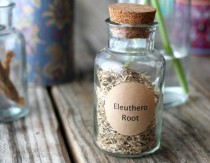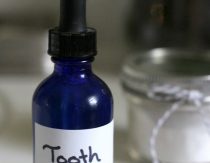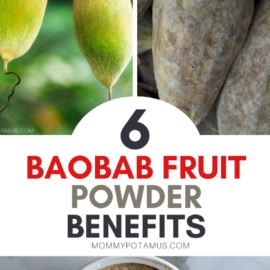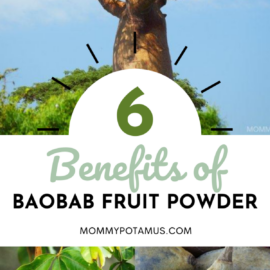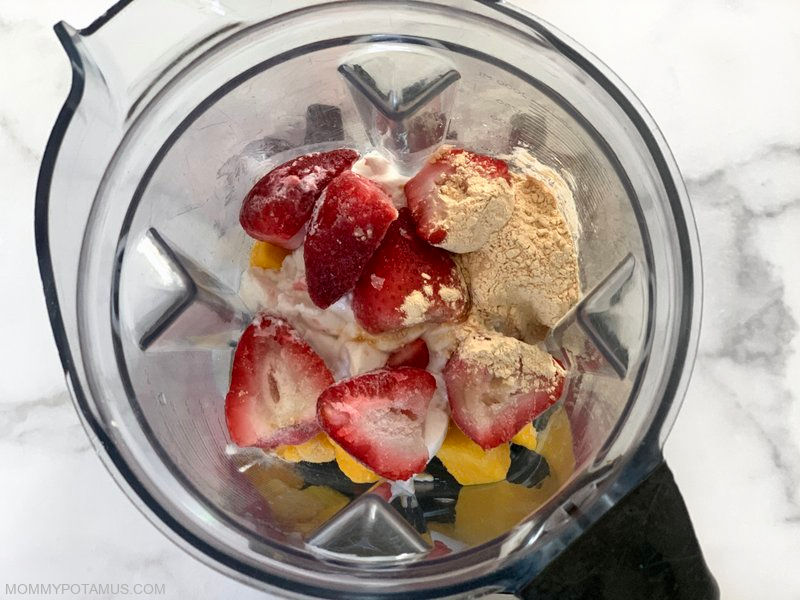
Maybe someday I’ll sit in the shade of a thousand-year old baobab tree, but for now I’m content to make smoothies with its highly nutritious fruit pulp. Pronounced “BEY–oh-bab,” this majestic tree is actually a collection of nine species that grow throughout Africa, Madagascar and Australia.
Known to locals as the “Tree of Life,” one particular species – Adansonia digitata – creates its own ecosystem in the dry climates where it thrives, providing shelter and nourishment for both people and animals.
It goes by a few other fun names, too . . . Monkey Bread tree, Magic tree, Cream of Tartar tree (because it’s used as a substitute) and Upside-down tree. That last one is because during the dry season its leaves drop off, making the branches look like the roots of an upside down trunk reaching into the sky.

Every part of the baobab tree – leaves, fruit pulp, seeds and bark – have been traditionally used as food, medicine, and raw material for household goods like woven baskets, rope, cloth and fishing nets.
It functions somewhat like a giant succulent – in fact, the trunk of a single baobab tree can hold up to 1,189 gallons of water, making it a valuable resource when rivers and watering holes dry up. (1)
The uniqueness of the baobab doesn’t stop there, though. Unlike its water-rich, its fruit is the only one in the world that dries naturally on the branch. Over the course of about six months, the baobab fruit’s exterior changes from something that resembles a mango to a smooth, hard brown shell that looks like a coconut.
You can crack baobab fruit just like you would a coconut, but instead of coconut meat and water flowing out, you’ll find a crumbly cream-colored pulp that has dried directly on the branch. It has a sour, tropical flavor that makes it a great addition to smoothies, frozen yogurt, probiotic-rich coconut yogurt, and more.
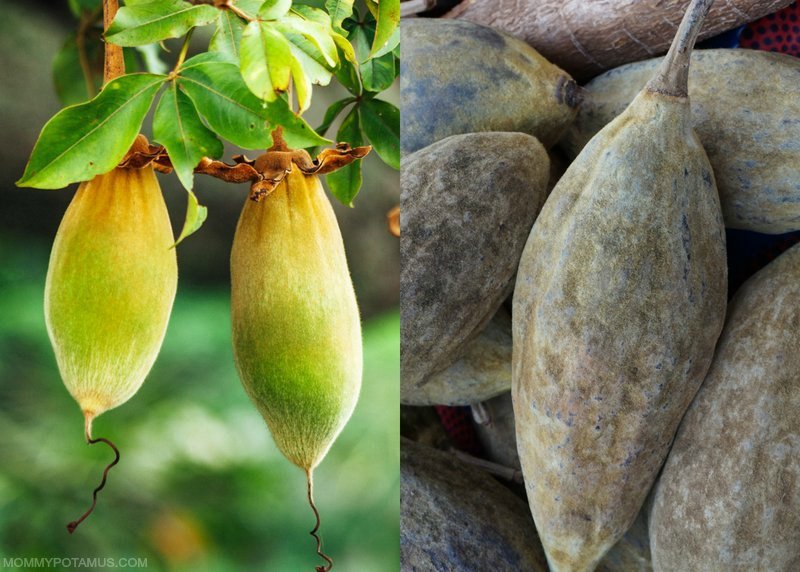
Health Benefits of Baobab Fruit Powder
Because it dries naturally on the branch, baobab fruit powder requires almost no processing – no pasteurization, heat extraction or solvents are needed, which helps preserve precious nutrients like vitamin C.
All you have to do is separate the powder from the peel and grind it up so that it’s not clumpy.
Baobab fruit is traditionally used to provide nutritive support during times of illness, particularly fevers and illnesses that cause diarrhea. It’s richer in potassium than bananas, which are often given during illness to help replenish electrolytes.
Although the exact nutrient content of baobab fruit powder will depend on where its grown and seasonal variations, this superfruit is rich in:
- Vitamin C (7-10 times more than oranges)(2)
- Vitamin B6
- Antioxidants (More than acai, goji berries, pomegranate or blueberries)
- Soluble and insoluble fiber
- Prebiotic fiber (Which nourishes beneficial bacteria)
- Magnesium (5 times more than avocados) (2)
- Potassium (6 times more than bananas) (2)
- Calcium (2 times more than cow’s milk) (2)
These nutrients work synergistically for our benefit in many ways, including:

#1- Immune Support
According to this study, vitamin C supports “various cellular functions of both the innate and adaptive immune system.”
Our bodies don’t make vitamin C, so the only way to optimize levels is through dietary intake. The baobab powder I use contains around 40-50 mg of vitamin C per serving, plus bioflavonoids which help the body absorb and use vitamin C. (2)(3)
Click here to learn more about how to support immune function naturally.
#2 – Gut Health
About 50% of baobab fruit powder is made up of soluble and insoluble fiber. The majority is soluble fiber, which:
- Acts as a prebiotic, aka nourishing food for the beneficial bacteria that live in our digestive tracts and make vitamin K2 for us, support immune function, help us digest food, and more.
- Dissolves in water to form a gel-like substance that slows down how quickly we digest sugars and fats.
The insoluble fiber is beneficial as well – it doesn’t dissolve in water and therefore travels through the digestive system intact, adding bulk that speeds up the processing and elimination of waste.
#3 – Blood Sugar Balance
As mentioned above, baobab is rich in soluble fiber that slows down how quickly we digest sugars and fats. Incorporating soluble fiber into our meals can support blood sugar balance while avoiding energy spikes and crashes.
In a study done at Oxford Brooks University, volunteers ate white bread with baobab extract baked in OR drank a glass of water with baobab mixed in alongside their slice of white bread. The study found that both approaches reduced glycemic response (blood sugar) and starch digestion.
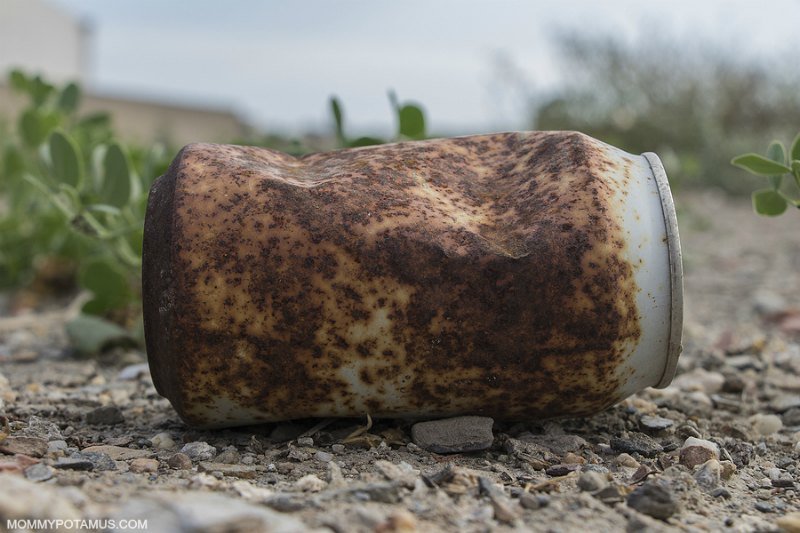
#4 – Counteracts Oxidative Stress/ Promotes Cellular Repair
If you’ve ever seen a rusty can, you know what oxidative stress looks like on metal. Though it’s harder to “see” on a cellular level, excessive amounts of free radicals – which our bodies produce as byproducts of metabolism, stress, and exposure to toxins – lead to accelerated aging and several disease processes.
Fortunately, baobab is rich in antioxidants, which are “natural substances whose job is to clean up free radicals. Just like fiber cleans up waste products in the intestines, antioxidants clean up the free radical waste in the cells.” (4) (5) (6)
#5 – Healthy Skin
Vitamin C, along with proline and glycine (found in bone broth and gelatin), protein, and zinc are essential for collagen synthesis. (7) Collagen is one of the main proteins that help keep skin supple.
Baobab oil – which is pressed from the seeds – also makes an excellent moisturizer. It’s a rich oil that has a soft pleasant aroma, loads of vitamin E, and three rare fatty acids that nourish skin: malvalic, sterculic, and dihydrosterculic. You can find it here.
#6 – Heart Health
Baobab fruit is a rich source of potassium, which helps maintain healthy blood pressure by stimulating the release of sodium via urine and easing tension within the walls of blood vessels. (8)
How To Use Baobab Powder
Baobab fruit powder can be:
- Mixed into water with a little sweetener to make a drink similar to lemonade
- Used as a replacement for cream of tartar in recipes
- Blended into smoothies
- Added to frozen yogurt or sorbet (the high pectin content makes it a wonderful thickener)
- Swirled into yogurt
- Stirred into oatmeal (I highly recommend adding peaches, too)
- Mixed into plain water for an easy electrolyte drink after a workout
- Blended into homemade energy bars
- Added to chia seed pudding
Does baobab powder have any side effects?
According to Phytopharmacy: An Evidence-Based Guide to Herbal Medicinal Products, the fruit pulp is generally regarded as safe and has no known contraindications. However, they say that the other parts of the plant which are sometimes used therapeutically (leaves and bark) should not be used while pregnant/breastfeeding or long-term due to lack of safety data on them.
One thing to keep in mind, though, is if your body is not used to dietary fiber you may experience some bloating, gas, or constipation. For most people it’s not a problem if normal amounts are consumed, but some people find it helpful to start small and work their way up.
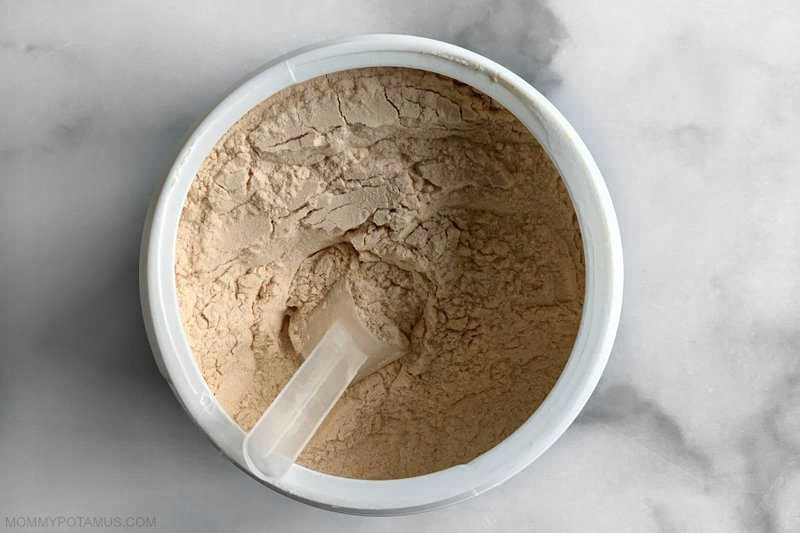
Where To Buy Baobab Powder
I use this brand, which contains about 40-50 mg of vitamin C per serving. In addition to providing a high quality product, they’ve made it their mission to support the local communities that harvest baobab through ethical trade and sustainable practices.
Sources
1. TripSavvy (2019) The Baobab: Fun Facts About Africa’s Tree of Life
2. Rahul, Jitin et. al. (2015) Adansonia digitata L. (baobab): a review of traditional information and taxonomic description
3. Althwab, Sami et. al. (2019) Protective Effect of Baobab Fruit Pulp (Adansonia digitata L.) from Oxidative Stress Induced in Rats by High-Fat Diet
4. Live Science (2016) What Are Free Radicals?
5. Braca, Alessandra (2018) Phytochemical Profile, Antioxidant and Antidiabetic Activities of Adansonia digitata L. (Baobab) from Mali, as a Source of Health-Promoting Compounds
6. Ismail, Balarabe (2019) LC-MS/QTOF identification of phytochemicals and the effects of solvents on phenolic constituents and antioxidant activity of baobab (Adansonia digitata) fruit pulp
7. Oregon State University. Vitamin C and Skin Health
8. Medical News Today. What can people do to lower diastolic blood pressure?


